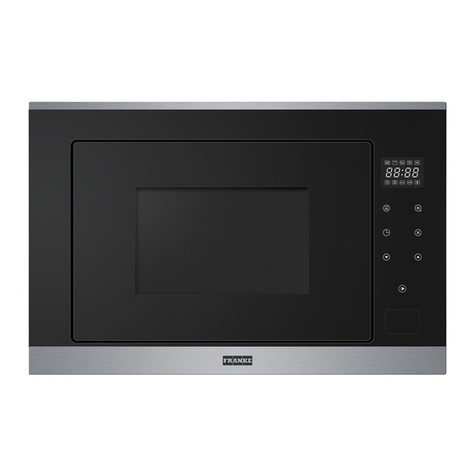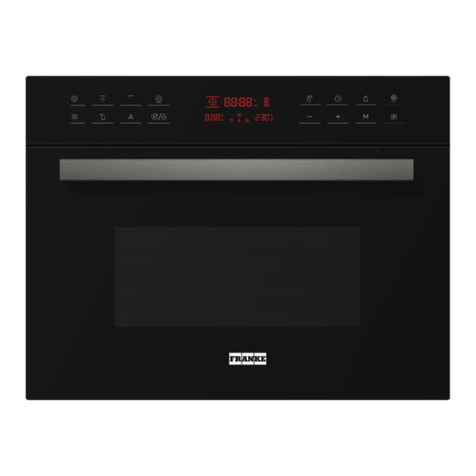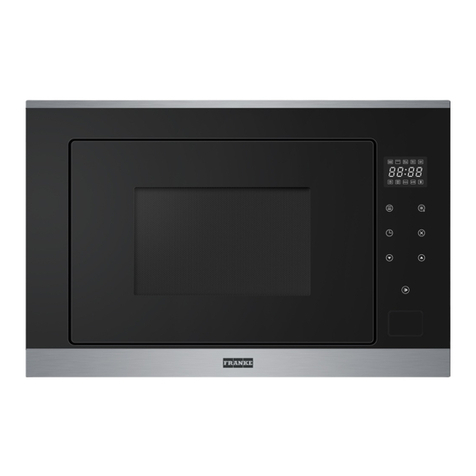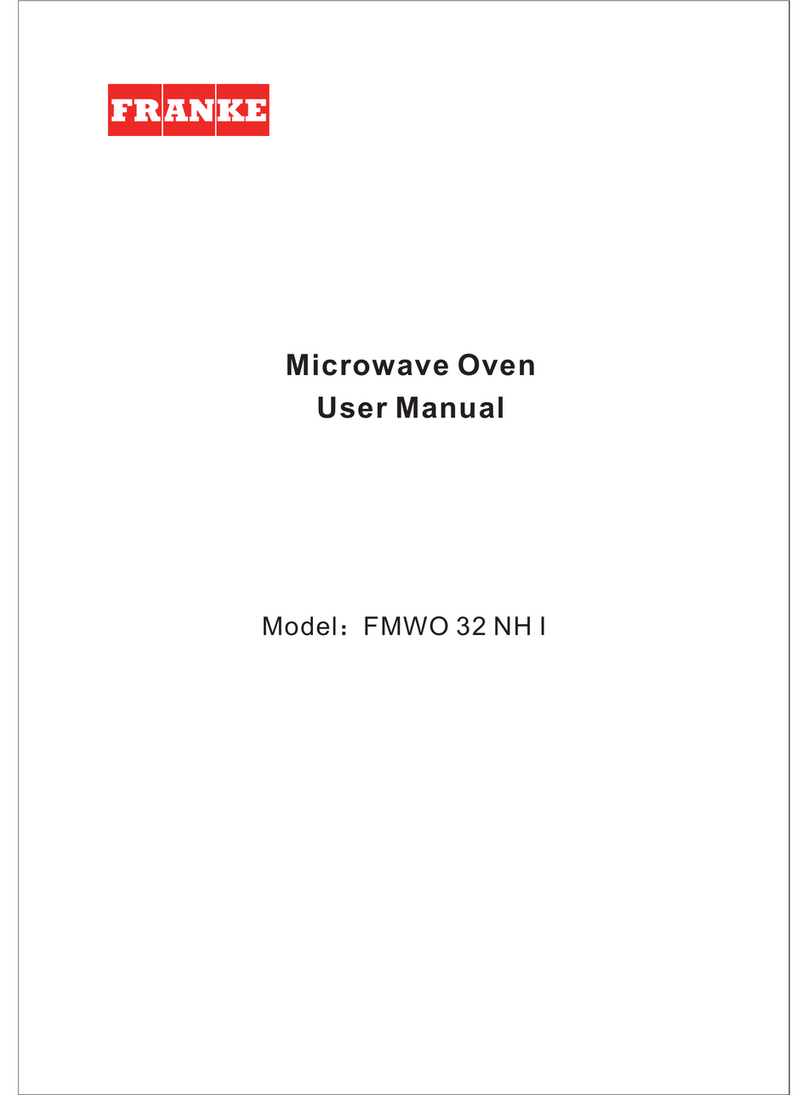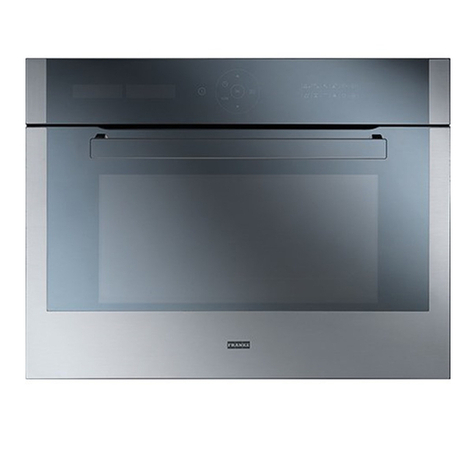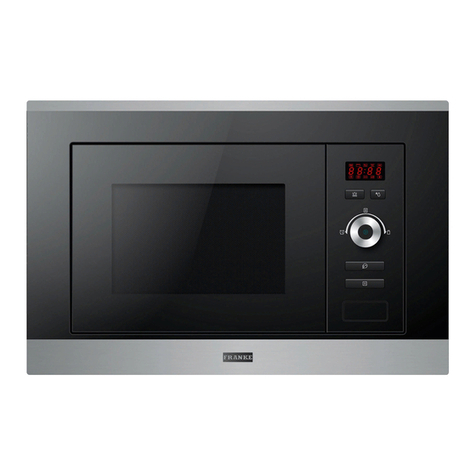
IMPORTANT SAFETY INSTRUCTIONS
IMPORTANT To reduce the risk of fire, electrocution, incidents or excessive exposure
to microwaves during appliance operation, simply take a few basic
precautions, including the following:
- Important: liquids or other foodstuffs
should not be heated in closed
containers, as they may explode.
- Important: it is dangerous for anyone,
except authorised Franke technicians,
to carry out any maintenance or repair
procedures involving the removal of
the protective covers which act as
a shield against exposure to
microwaves.
Cleaning and user maintenance shall
not be made by children unless they
are supervised.
- Keep the appliance and its cord out of
reach of children .
- Only use utensils which are suitable
for use in the microwave.
- The oven must be cleaned regularly
and all built up food residue carefully
removed.
- Read and observe the specifications:
“PRECAUTIONS TO AVOID
POSSIBLE EXPOSURE TO
EXCESSIVE MICROWAVE
ENERGY”.
- When heating food in plastic or paper
containers, check the oven frequently
to minimise the risk of ignition.
- If smoke is emitted, switch off or
unplug the appliance and keep the
door closed in order to stifle any
flames.
- Do not overcook food.
- Before placing containers/recipients/
paper or plastic bags in the oven,
make sure you have removed any
crockery with decorations or metal
handles.
- Install or position the oven in strict
compliance with the installation
instructions supplied.
- Eggs in their shells and whole boiled
eggs should not be heated in the
microwave oven as they may explode,
even after the set heating time has
elapsed.
- This appliance is intended to be used
in household and similar applications
such as:
- staff kitchen areas in shops, offices
and other working environments;
- by clients in hotels, motels and other
residential type environments;
- farm houses;
- bed and breakfast type
environments.
- If the power cord is damaged, contact
an authorised Franke support centre
in order to prevent potentially
hazardous situations from developing.
- Do not keep or use the appliance
outdoors.
- Do not use this oven near water,
in damp basements or next to
swimming pools.
- Some surfaces accessible to the
user can reach high temperatures
when the appliance is running.
During use, the appliance surfaces
can become very hot. Keep the cord
away from hot surfaces, and do not
place anything on top of the oven.
- If the oven is not kept clean, its outer
surface could become damaged and
its lifespan shortened as a result,
causing a potentially hazardous
situation.
-
2

